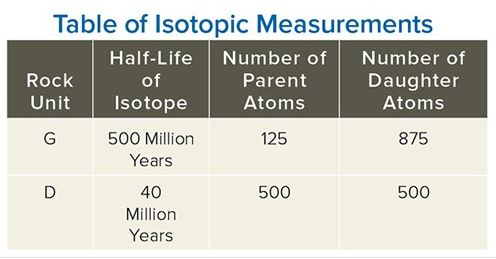Describe the three main environmental ethic approaches used to determine who or what has value in the Earth's biosphere
What will be an ideal response?
The three main ethical approaches used to determine environmental value are anthropocentric, biocentric, and ecocentric views. Anthropocentric ethics assigns intrinsic value only to humans and defines right actions only in terms of positive outcomes for humans. The conservationist view of environmental management is an example of this human-centered approach. Biocentric ethics takes into consideration the value of other living things and values them equally with humans. This biocentric ethic is often articulated by those in the animal rights movement. Ecocentric ethics places value on communities of organisms and ecosystems, and is the most expansive and "big picture" approach to determining environmental value.
You might also like to view...
Using the data in this table, calculate the number of half-lives that have passed for the granite (unit G on this table).

A) 1
B) 2
C) 3
D) 4
E) 5
An individual coral animal is called a ____.?
A) ?polyp B) ?rhodophyte C) ?phaeophyte D) ?stipe
A large step toward the elimination of poverty and the reduction of resource consumption could be made possible if there were cooperation among wealthier nations to reduce the amount of
A) wasted food and water. B) aid given to developing nations. C) redundant economic regulation. D) taxes paid by wealthier people.
One of the least promising non-fossil fuel energy sources uses
A) wind power. B) biomass energy. C) geothermal energy. D) thermal-energy conversion in the oceans.